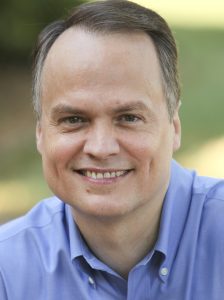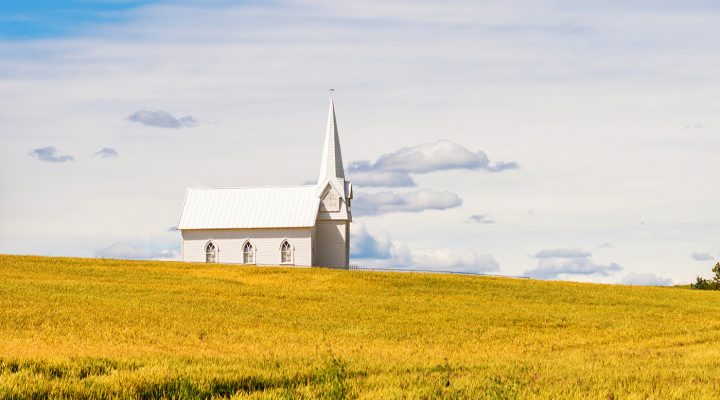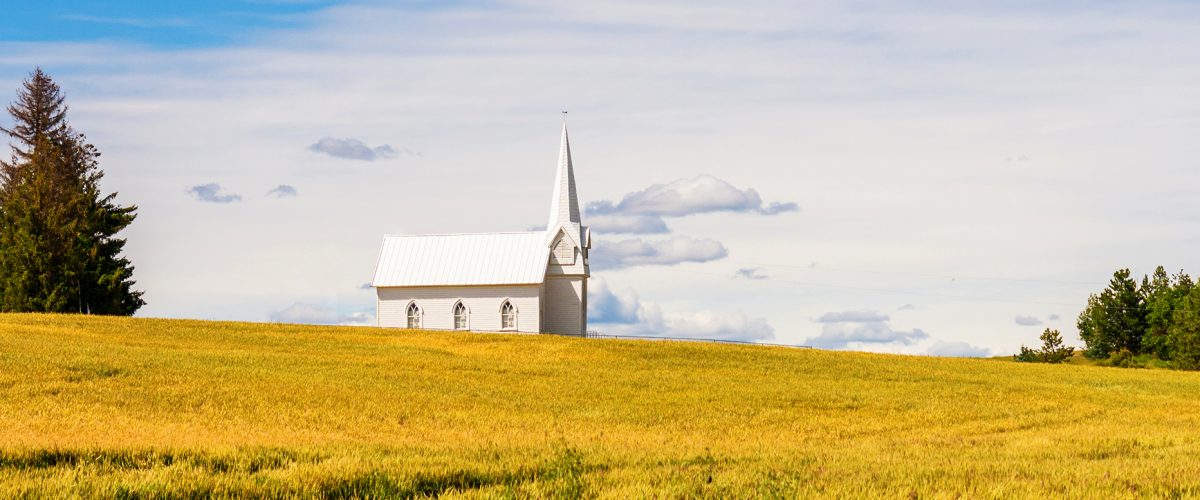Last week, I shared my story about serving as a megachurch pastor. This week, I’d like to tell you about my experience leading a small-membership rural church. The two pastorates could not be more different.
Most of my 40-year ministerial career was spent serving large-membership congregations. As a result, I often felt more like the CEO of a large religious organization than the pastor of a congregation. I devoted most of my energy to institutional issues like buildings, budgets, fundraising, strategic planning, marketing, denominational commitments and staff supervision. I enjoyed much of the work and, other than the megachurch chapter, I’m mostly grateful for my time in large churches.

Martin Thielen
However, along the way, I slowly grew weary of institutional management. In my first full-time pastorate, I knew the name of every member and most of their stories. But as the decades passed, I only knew the names of a small percentage of the members and few of their stories. I missed being a pastor.
Near the end of my career, I realized my work had evolved from a joyful vocation into a job. I still did the job with competence, but I wasn’t having much fun. I’m not blaming this dynamic on large congregations. I’m sure many large church pastors manage to maintain their pastoral joy and identity in spite of all the administrative tasks. I just know I grew tired of institutional church work in large congregations. So I took early retirement.
Retirement bliss lasted all of seven weeks. Then I received an unexpected phone call. A small rural church about 20 miles from my home needed an interim pastor. Their minister fell ill, and they needed someone to fill in for a while. I had preached there on multiple occasions over the years and liked the feel of the place, so I agreed to the interim.
About two months later, the pastor informed the congregation he would not return, and I was asked to consider taking the church on a permanent part-time basis. After several weeks of thought, prayer and dialogue with key people, I said yes.
The part-time rural church was (literally) 1% the size of my largest pastorate. That church, if you count children, had 10,000 members. My little country church had fewer than 100. Worship attendance at my previous megachurch ran about 2,500. When I first arrived at the little church, it averaged about 25 on Sunday.
“The part-time rural church was 1% the size of my largest pastorate.”
If you include the preschool, my largest pastorate employed more than 150 staff members. I had my own full-time administrative assistant whose only responsibility was to support the senior pastor. The significant compensation package even included a company car. The small rural church I served in retirement employed a part-time pastor and a part-time pianist, and nobody got a car.
I used to lead the largest church of my denomination in my home state. My retirement church was among the smallest. But I enjoyed the work a lot more. As I recently told a friend, “Although my retirement church was only 1% as large as my megachurch pastorate, I liked it 99% more!”
During my small-church pastorate, I spent virtually all my time preparing and leading worship, loving the congregation and caring about its tiny community of about 200 people. I knew everyone’s name who attended worship and many of their stories. I typed up, ran off and folded the weekly bulletins, which became an enjoyable labor of love.
Early on in that pastorate, I wrote a handwritten card to every person in the church. Instead of having a secretary write their names and addresses on the envelopes, or running them through mail merge, I hand-printed each one. I also went to the Post Office to purchase stamps and placed a stamp on each envelope because my church didn’t have a postage machine. They did have a website. However, they lost the password a long time ago and had not updated it for years, including information about the last two pastors. Nobody seemed to have noticed. Or cared.
“I also enjoyed hanging out at the local general store and talking to folks, many of whom were connected to my congregation.”
I made numerous home visits during my tenure at the little church and found them exceptionally meaningful. I also enjoyed hanging out at the local general store and talking to folks, many of whom were connected to my congregation. Several of my parishioners called me “Brother Martin.” I’ve never liked that designation, even during my Baptist years. But in that rural setting, I realized it was a term of endearment, so I was fine with the title.
Music at the church was limited, with some Sundays better than others, depending on how many choir members showed up. Sometimes children were present, sometimes not, so I kept a children’s message in my Bible, just in case. We didn’t have any programs to speak of. During my tenure, a newcomer arrived with a “comfort dog” to help them with their anxiety disorder. In spite of his occasional barking (especially during Communion), Houdini was warmly welcomed into the church family.
On the back wall of the sanctuary hung a big picture of Jesus. Art critics, historians and theologians would correctly point out that he looked too much like a modern white Westerner and not enough like a first-century Jew. But I can think of far worse things to hang on the wall of a church than a picture of Jesus. The picture vividly reminded that congregation what they were about and who they followed.
While serving at that small church, I didn’t completely abandon my previous methods of doing large-church ministry. For example, I couldn’t help but play around with a “branding” for the congregation. So I came up with the motto, “Building Relationships that Last: with God, One Another and Our Community.”
We put the new motto on our stationery, newsletter and worship bulletins, although I don’t think it had much of an impact. However, the reality behind the motto was palpable in that congregation. Those rural folks were experts at building relationships that last. And those connections, more than anything else, were the driving force behind the church.
Thankfully, the congregation openly welcomed newcomers into their connectional web, and I got to be a part of it for a couple of years. I even got paid a little bit to do so. Had it not been for changes in my theology which made continuing as a pastor increasingly difficult, I still would be there.
Last week, I ate lunch with several retired clergy friends. During lunch we shared stories about our favorite pastorates. I told several stories about my little post-retirement church. For example, when the community hosted a “Moonshine and Corn Bread” festival, the congregation fully supported the effort. When I arrived at the church the morning of the festival, a prominent member had just placed several 1960s CDs into the sound system, with the speakers (in the steeple) blaring the music onto Main Street. When I walked up to greet him, he said, “I hope the Lord will forgive us for playing rock and roll music at a moonshine festival.”
I laughed so hard I almost fell down.
As I told this and other stories to my friends, including our surprisingly successful experiment with “drive-in worship” during the pandemic (complete with a fishing net to take up the offering), I felt deep gratitude for that little pastorate welling up in my heart. I said to my friends, “I had more fun and felt more joy at that little church than I did at most of my large congregations. It was a wonderful conclusion to my ministerial vocation.”
I often refer to that church as my “good ending” pastorate.
I don’t mean to over-romanticize small-membership churches. I’m sure plenty of them are dysfunctional, just like medium and large churches. But at the end of my ministerial career, it was a great gift to be a pastor again instead of a CEO. Even at a 1% church.
Martin Thielen, a retired minister and writer, is the creator and author of www.DoubtersParish.com.


